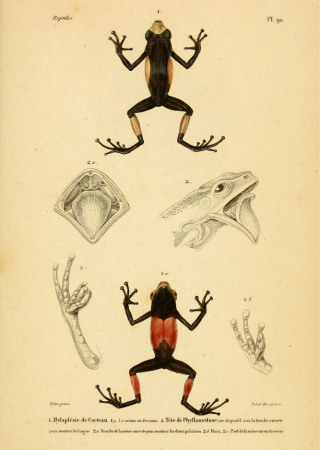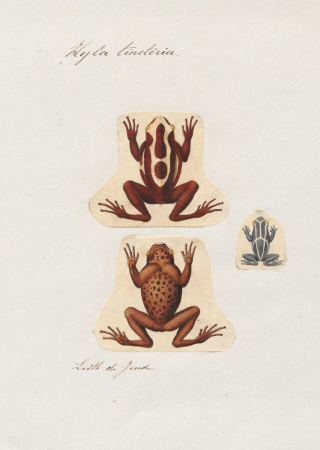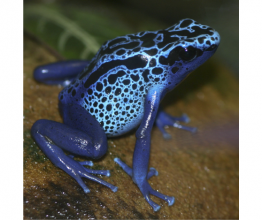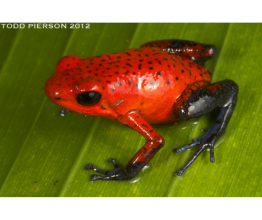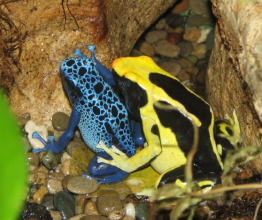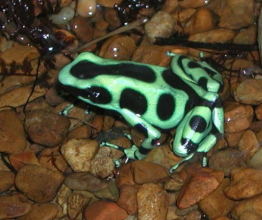Poison Dart Frog
- ...these frogs are, as their name suggests, used by natives for poisoning the tips of their arrows?
- ...natives acquire the poison from the frogs by skewering a live frog on a stick and heating it over a fire, during which the heated skin secretes a poisonous fluid?
- ...skin secretions of the frog contain four primary ingredients, including batrachotoxin, which is one of the most poisonous substances natural organic substances in the world?
- ...the species Dendrobates auratus was deliberately introduced in Hawaii to reduce the number of non-native insects?
- ...the amount of poison in one of these small frogs is enough to kill 1000 mice?
- ...there are currently five species in the genus Dendrobates?
Basic Information:
Phylum – Chordata
Class – Amphibia
Maximum length – around 5 cm
Food – insects
Distribution – tropical and subtropical America
Type of poison – neurotoxin, cardiotoxin
Distinguishing marks:
Small species of frog averaging 3-4 cm, usually strikingly colored. On a black body, they may have, according to species or variety, patterns in blue, turquoise, yellow, orange, red and other colors.
These tiny poison frogs are known from the tropical forests of Central and South America. Their skin produces the alkaloid pumiliotoxin and other poisons, which the frogs use for self-defense. Poison from these frogs causes paralysis of nerves or the circulatory system. Victims generally die of lung paralysis or heart failure. Poison dart frogs are highly variable in their coloring, but all are very striking and brilliant. These vibrant colors warn potential predators that the frog is poisonous. These frogs exhibit sexual dimorphism; males have larger toe discs than females, and are usually smaller and thinner.

